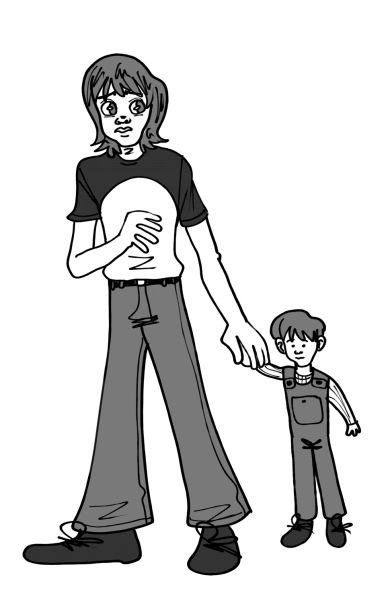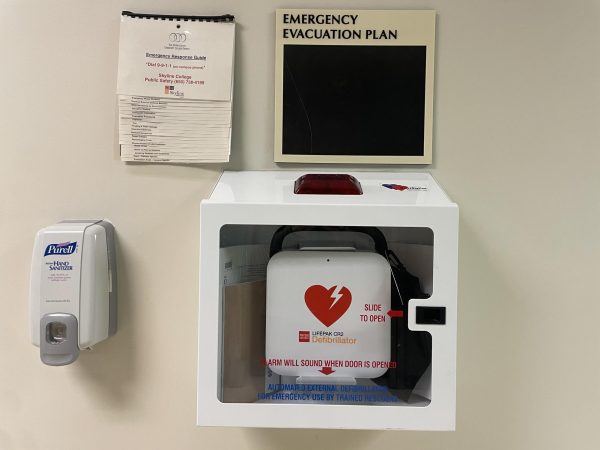The student teacher
With winter weather finally creeping in and summer, oddly, just around the corner, potential car trouble of all sorts loom on the horizon.
Luckily the Skyline View is here to help. While there are dozens of tips that might make road trips and long commutes less daunting, few things are as important as changing a tire. After all, if your car breaks down, you’re pretty much stuck waiting for AAA, but with a little knowledge, a blown tire can be nothing more than a slight delay.
There are a few variables when it comes to changing a tire – for example, most spare tires are hidden under the floor of the car’s trunk, but on many trucks, SUVs and vans the tire may be mounted under the vehicle itself, requiring a different approach to accessing the spare – but a little preparation is all you need to eliminate the element of surprise.
Things you already have:
- Spare tire
- Emergency jack
- Tire iron/multipurpose wrench
- Things you should add to the kit:
- A two-foot length of one-inch diameter metal pipe
- Two wheel chocks or two rocks the size of softballs
- A pair of work gloves (cheap ones are fine)
- The owner’s manual for your car
- Reflective warning props (those bright orange plastic triangles)
- A headlamp
- This article, laminated to prevent water damage
Before you get stuck, be sure to:
- Read your owner’s manual.
- Check the pressure of your spare tire twice a year and inflate if necessary.
- Change your tire in the safety of your driveway or garage just for practice (don’t forget to change it back when you’re done).
How to make the change:
- A car with a blown or flat tire will list toward the damage and make a low-pitched buzzing or heavy thumping noise. When this happens turn on your hazard lights and cautiously pull over to the right side of the road. Stop your car fully off of the road and in a place where you can see and be seen by oncoming traffic.
- Before exiting your car, make sure the emergency brake is on tight, and if you drive an automatic put the car in park. If you drive a manual put the car in first or reverse.
- Set up your reflective warning props behind your vehicle.
- Wedge the tire chocks or rocks under the front and back of a tire on the opposite side of the car as the flat (if the flat is on the driver’s side, chock a tire on the passenger side…).
- Before lifting the car, throw on those gloves and loosen the lug nuts on the flat tire using the tire iron, but do not remove them (this may require removal of the hubcap or locknuts. Again, a practice run solves this mystery). To remove lug nuts, turn counter-clockwise. If they won’t budge, slide the pipe over the handle of the wrench and use it for leverage.
- Consult your manual to find out if your car has strategic points recommended for jacking the car up, failing this, just make sure you place the jack under the frame of the car near the flat tire. If you place it under a body panel or – lord help us – your muffler, gas tank, or oil pan you will do a lot more damage to your car.
- Jack up your car until the flat tire just clears the ground. As a safety precaution slide the spare under the car at this point, but never put any body part under the car while it is raised on an emergency jack.
- Remove the lug nuts completely and pull the wheel off with your hands placed at the sides of the tire. If the wheel does not want to come off, kick it gently a couple of times until it does.
- Place the spare on the hub (hands on the sides of the tire), and hand-tighten the lug nuts.
- Lower the car until the spare rests on the ground but doesn’t bear the full weight of the car. Finish tightening the lug nuts with the wrench. Tighten the nuts in a star pattern, giving one nut a full turn of the wrench then moving to the nut diagonal from it and giving it one full turn and so on until all the lugs are wrench tight.
- You can now lower the car completely, pack up and get yourself to the nearest gas station or service center. Remember, spare tires are not meant to become daily drivers, they are meant to get you out of harm’s way. Unless you have a full size spare, riding on a spare tire for long periods of time can throw your wheels out of alignment. If you do not have a full size spare, it is recommended that a blown tire on the drive wheels (a front tire on a front-wheel-drive car, etc) should be replaced with a full size if you plan on driving more than a few miles to the service station, meaning move a back tire to replace the flat, and replace the back tire with the spare.
With this knowledge young or inexperienced drivers will definitely be ready for the road ahead.















